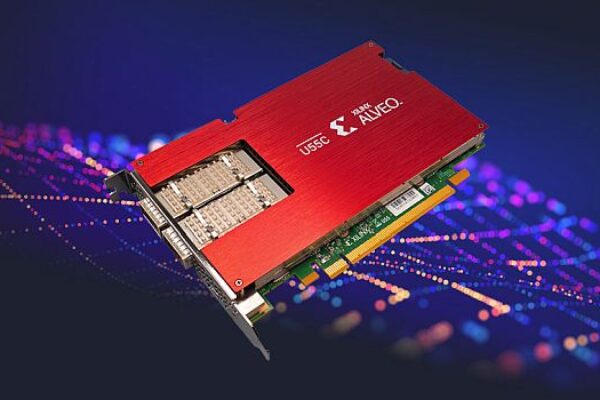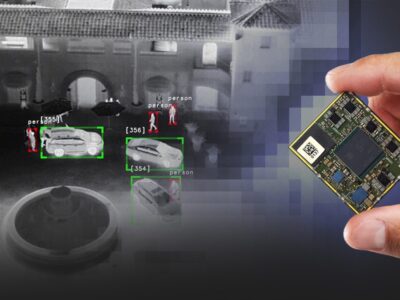
Accelerator card for HPC, big data workloads
The Alveo U55C data center accelerator, says the company, brings superior performance-per-watt to high-performance computing and database workloads and easily scales through the Xilinx HPC clustering solution. The Alveo U55C card is offered as the company’s most powerful Alveo accelerator card ever, and provides the highest compute density and HBM capacity in the Alveo accelerator portfolio.
Together with the new Xilinx RoCE v2-based clustering solution, says the company, a broad spectrum of customers with large-scale compute workloads can now implement powerful FPGA-based HPC clustering using their existing data center infrastructure and network.
“Scaling out Alveo compute capabilities to target HPC workloads is now easier, more efficient and more powerful than ever,” says Salil Raje, executive vice president and general manager, Data Center Group at Xilinx. “Architecturally, FPGA-based accelerators like Alveo cards provide the highest performance at the lowest cost for many compute-intensive workloads. By introducing a standards-based methodology that enables the creation of Alveo HPC clusters using a customer’s existing infrastructure and network, we’re delivering those key advantages at massive scale to any data center. This is a major leap forward for even broader adoption of Alveo and adaptive computing throughout the data center.”
The Alveo U55C card, says the company, combines many key features that today’s HPC workloads require. It delivers more parallelism of data pipelines, superior memory management, optimized data movement throughout the pipeline, and the highest performance-per-watt in the Alveo portfolio.
The Alveo U55C card is a single-slot full height, half length (FHHL) form factor with a low 150W max power. It offers superior compute density and doubles the HBM2 to 16GB compared to its predecessor – the dual-slot Alveo U280 card. The U55C provides more compute in a smaller form factor for creating dense Alveo accelerator-based clusters, and it’s built for high-density streaming data, high IO math, and big compute problems that require scale-out like big data analytics and AI applications.
Leveraging RoCE v2 and data center bridging, coupled with 200 Gbps bandwidth, the API-driven clustering solution enables an Alveo network that competes with InfiniBand networks in performance and latency, with no vendor lock-in, says the company. MPI integration allows for HPC developers to scale out Alveo data pipelining from the Xilinx Vitis unified software platform. Utilizing existing open standards and frameworks, it’s now possible to scale out across hundreds of Alveo cards regardless of the server platforms and network infrastructure and with shared workloads and memory.
Software developers and data scientists can unlock the benefits of Alveo and adaptive computing through high-level programmability of both the application and cluster utilizing the Vitis platform. The company says that it has invested heavily in the Vitis development platform and tools flow to make adaptive computing more accessible to software developers and data scientists without hardware expertise.
The major AI frameworks like Pytorch and Tensorflow are supported, as well as high-level programming languages like C, C++ and Python, allowing developers to build domain solutions using specific APIs and libraries, or utilize Xilinx software development kits, to easily accelerate key HPC workloads within an existing data center. The Alveo U55C card is currently available.
Evaluation of the Alveo U55C is available via public cloud-based FPGA-as-a-Service providers, as well as select colocation data centers for private previews. Clustering is available now for private previews, with general availability expected in the second quarter of next year.
 If you enjoyed this article, you will like the following ones: don't miss them by subscribing to :
eeNews on Google News
If you enjoyed this article, you will like the following ones: don't miss them by subscribing to :
eeNews on Google News




